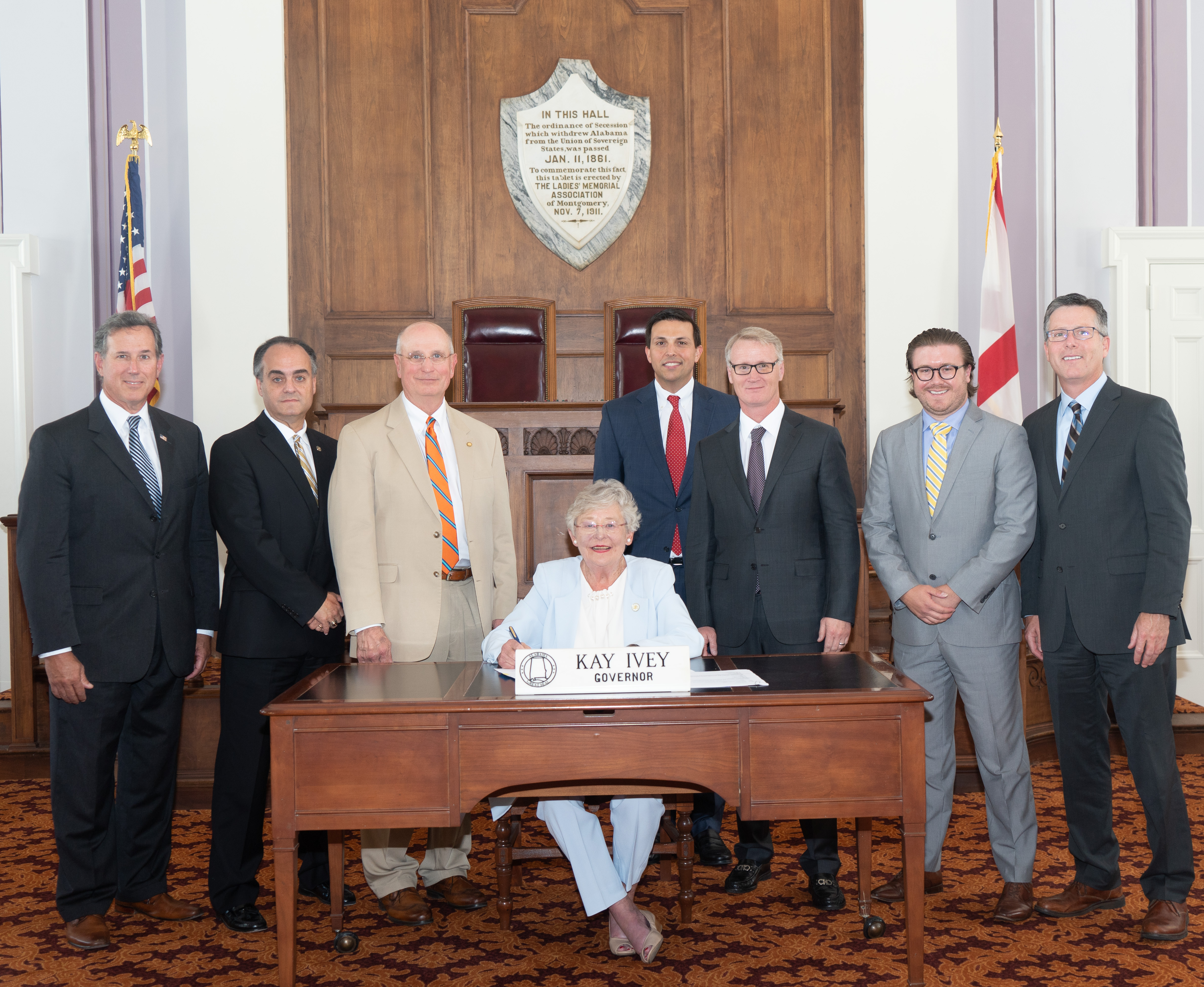Category: Advocacy
-

ALAPAC Update: Recognizing Our Top Donors
Thank you! Thank you! Thank you! Each year, ALAPAC seeks donations from physicians in order to keep the political presence of physicians strong. While we are currently in the final stages of our campaign to raise $75k in 75 days, we would like to take a moment to thank those individuals who have gone above…
-

ALAPAC Hosts Successful Fundraiser for Charlotte Meadows
Last week, ALAPAC, at the home of Drs. Lori and Penn White, hosted a fundraiser for Charlotte Meadows. We are proud to say the event was an overwhelming success! As the political action committee of the Medical Association, ALAPAC seeks to elect candidates who best represent the professional needs of physicians and their patients. Charlotte…
-

Gov. Ivey Hosts Bill Signing Ceremony for MAT Act
Wednesday, Gov. Kay Ivey hosted a formal bill signing ceremony at the Alabama Capitol for this year’s Medication Assisted Treatment Act (“MAT Act”). Flanked by an array of both state and national leaders, the signing of this legislation represents another step Alabama is taking to combat the drug abuse epidemic and help those struggling with…
-

Help Us Address “Surprise Billing” Issues
Last week, the U.S. House Energy and Commerce Committee advanced a legislative package (HR 3630) to address the ongoing “Surprise Billing” issues affecting patients and physicians. While this is not the same bill the Association and other medical societies were supporting, the committee did agree to adopt an amendment establishing an independent dispute resolution (IDR)…
-

Why I Give: Dr. John Meigs
As president of the Medical Association, I want to thank you for your membership in our organization. While membership is essential to our success, so too is advocacy. Past President Dr. Underwood recently said, “It’s amazing how politics can determine the direction of medicine.” He’s exactly right. Yet, instead of waiting until politicians are about…
-

ALAPAC Launches $75K in 75 Days Campaign
Earlier this month, ALAPAC kicked off its year-end fundraising campaign and is seeking to raise $75,000 in 75 days. As the official political action committee of Alabama physicians, ALAPAC provides financial and technical support to candidates medicine can work with on the myriad of health care issues affecting our state. It may not be a…
-

Call for Nominations: Senior Services Advisory Board
The Alabama Department of Senior Services has an advisory board, and one member of the board must be a representative of the medical profession appointed the Governor. The Senior Services Advisory Board typically meets twice annually and members are reimbursed for travel and other expenses actually incurred in the performance of their official duties. Interested…
-

Senate Committee Tackles Surprise Billing
The Senate Health Committee finally passed a major health care package, which could bring an end to surprise billing for patients by capping out-of-network charges at a rate already negotiated by insurers. However, the legislation could see more changes before it sees a full Senate vote. Wednesday, the Senate Health, Education, Labor and Pensions (HELP)…
-

Can We Fix Alabama’s Rural Physician Shortage?
It takes up to 10 years to train a physician. That decade of training is just one contributing factor for the reason the United States is facing a serious shortage of physicians. Other factors include the growth and aging of the population and the impending retirements of older physicians. While medical schools have increased enrollment…
-
